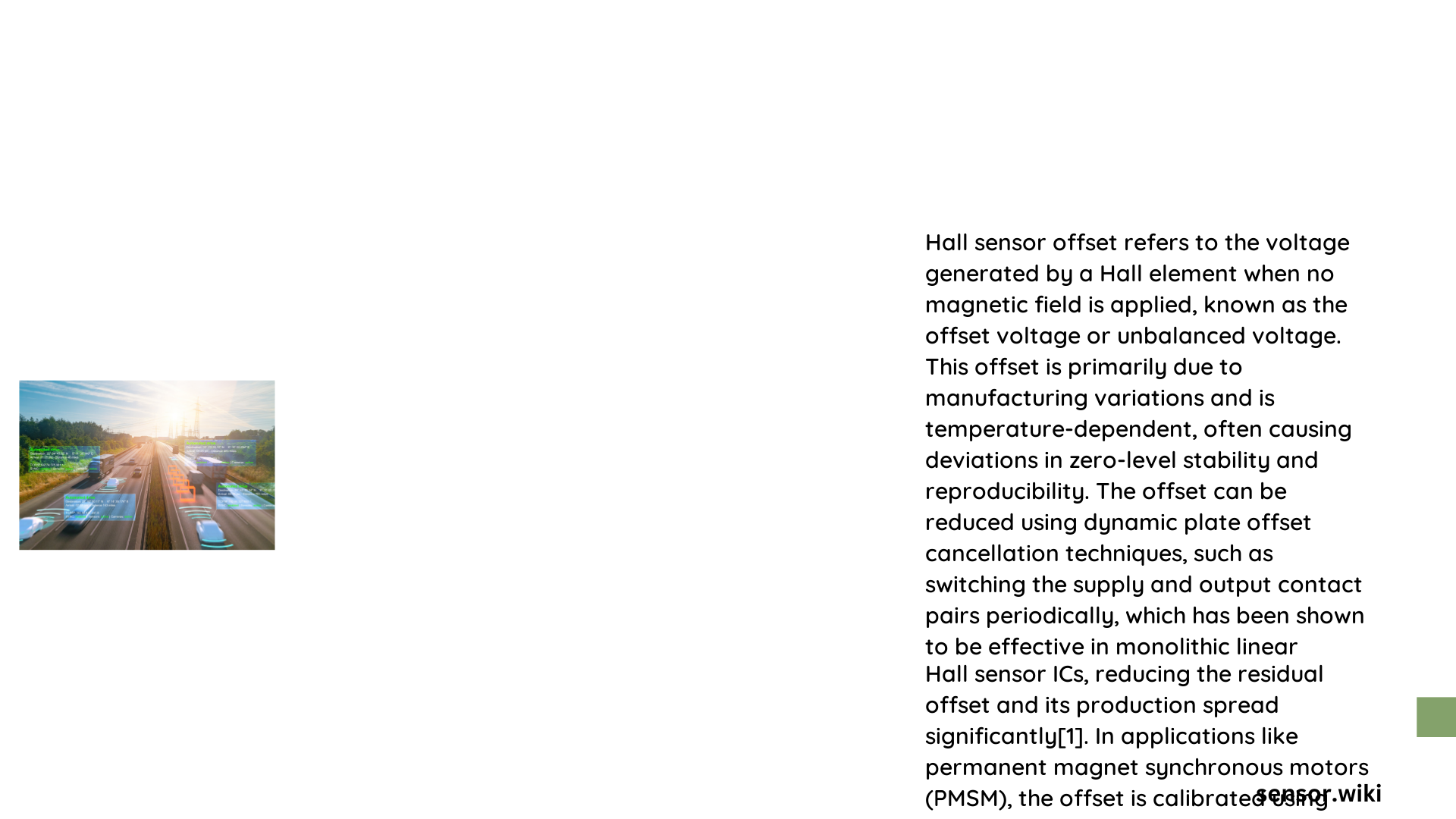Hall sensor offset represents a critical parameter in electromagnetic sensing technologies, where minute variations in sensor alignment can significantly impact system performance. Engineers and technicians must understand the intricate mechanisms of offset adjustment to ensure accurate position detection, minimize measurement errors, and optimize sensor reliability across diverse operational environments.
What Causes Hall Sensor Offset?
Hall sensor offset emerges from multiple interconnected factors that influence sensor performance:
Physical Misalignment
- Manufacturing tolerances
- Mechanical mounting variations
- Thermal expansion differences
Electromagnetic Interference
- External magnetic field disturbances
- Temperature-induced magnetic flux changes
- Electronic circuit noise
Sensor Characteristics
- Inherent semiconductor material variations
- Semiconductor junction temperature sensitivity
- Aging and long-term drift mechanisms
How Can Hall Sensor Offset Be Measured?

Precision Measurement Techniques
| Measurement Method | Accuracy | Complexity | Recommended Application |
|---|---|---|---|
| Static Calibration | ±0.5% | Low | Laboratory environments |
| Dynamic Calibration | ±0.1% | High | Industrial motor control |
| Temperature Compensation | ±0.05% | Very High | Aerospace/Robotics |
Calibration Procedure Steps
- Zero-Field Baseline Establishment
- Measure sensor output in zero magnetic field
- Record initial voltage/current reference point
-
Document environmental conditions
-
Reference Magnetic Field Application
- Apply controlled magnetic field
- Measure sensor response
-
Calculate deviation from expected output
-
Compensation Algorithm Development
- Generate mathematical correction model
- Implement digital or analog compensation
- Validate correction effectiveness
What Are the Practical Implications of Hall Sensor Offset?
Performance Impact
- Reduced positioning accuracy
- Increased motor control system errors
- Potential mechanical vibration
- Efficiency degradation
Industry-Specific Consequences
Automotive Applications
- Electric vehicle motor control precision
- Battery management system accuracy
- Regenerative braking performance
Robotics
- Joint angle measurement
- Precise motion control
- Servo mechanism responsiveness
Industrial Automation
- Conveyor system tracking
- Robotic arm positioning
- Automated manufacturing alignment
What Advanced Techniques Minimize Hall Sensor Offset?
Sophisticated Compensation Strategies
- Temperature-aware calibration algorithms
- Machine learning-based drift prediction
- Real-time adaptive correction mechanisms
Hardware Mitigation Approaches
- Shielded sensor packaging
- Integrated temperature compensation circuits
- High-precision analog-to-digital converters
What Tools Support Hall Sensor Offset Analysis?
Recommended Software
- MATLAB
- LabVIEW
- Python Scientific Computing Libraries
- Specialized Sensor Calibration Platforms
Essential Hardware
- Precision Gaussmeters
- Temperature-controlled test chambers
- High-resolution oscilloscopes
- Magnetic field generators
Best Practices for Hall Sensor Offset Management
- Regular calibration intervals
- Comprehensive environmental testing
- Documented measurement procedures
- Continuous performance monitoring
- Systematic error tracking
Emerging Research Directions
- Quantum sensing technologies
- Artificial intelligence-driven calibration
- Nanoscale magnetic field detection
- Self-healing sensor architectures
Conclusion
Hall sensor offset represents a nuanced challenge requiring multidisciplinary expertise in electromagnetic sensing, semiconductor physics, and precision engineering. Successful management demands comprehensive understanding, sophisticated measurement techniques, and continuous technological innovation.
Reference:
– Texas Instruments Hall Effect Sensor Documentation
– IEEE Sensor Calibration Standards
– National Instruments Sensor Measurement Guide
